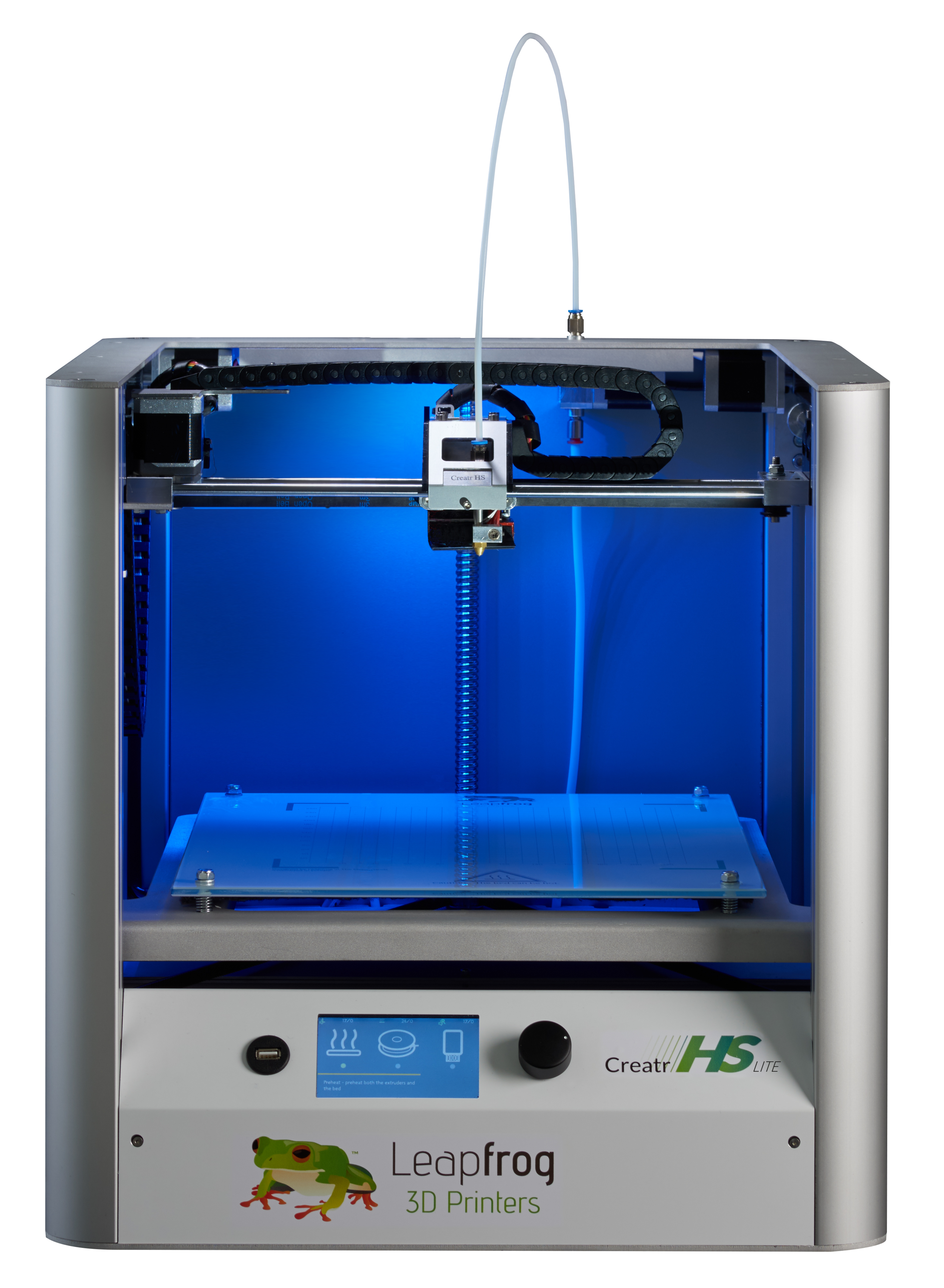
Netherlands-based 3D printer manufacturer Leapfrog introduced the Creatr HS Lite, a new machine that fills a gap in their product line.
Previously, the company offered this product set:
- Creatr, a consumer machine priced at €1,299 (USD$1,480)
- Creatr HS, a “semipro” machine priced at €2,499 (USD$2,850)
- Create HS XL, a very high volume professional device, priced at €3,999 (USD$4,560)
You can see the problem here: there was a rather large jump from their basic consumer entry to the semipro Creatr HS, a dual-extrusion machine of considerable power.
Now they’ve introduced the Creatr HS Lite, a machine that is based on the Creatr HS, but has fewer features at a much lower price.
Like the Creatr HS, the Lite version has a generous build volume of 280 x 270 x 180mm, aluminum construction, color touch screen and similarly attractive exterior styling.
Of particular interest is that the Creatr HS Lite also inherits the “HS” capabilities: “HS” stands for “high speed”. Both the HS and HS Lite (and HS XL) can print at speeds up to 300mm/second, with non-printing travel speeds up to 400mm/second. Meanwhile, the original, low-priced Creatr can manage only up to 60mm/second.
How does the Creatr HS Lite differ from the Creatr HS? There are several key changes that may or may not be important to you:
- There is no heated print surface, meaning the HS Lite can print only PLA successfully.
- There’s only one extruder, while the Creatr HS has two.
- The minimum layer size is 0.10mm, while the Creatr HS can manage 0.02mm.
Depending on what you intend to do with your 3D printer, these limitations could be unimportant. You may desire the high speed, but not require a second extruder, for example.
And then there’s the price of the Creatr HS Lite. It’s set at €1,699 (USD$1,940), a drop of €800 (USD$900) from the more powerful Creatr HS. For a high-speed 3D printer, this is not a bad price – and it puts high-speed 3D printing into a price range many more people can afford.
We can imagine there are people who wish to do high-speed PLA printing but don’t require dual extruders at a higher price. This machine would fit very well into that niche.
The machine may also be of primary interest to educators seeking a simplified, but faster machine for use in schools. Printing PLA in a schoolroom is likely a better option than printing ABS due to odor emissions and the fast print time would be welcomed by impatient students. The lower price won’t hurt the buying decision, too.
Via Leapfrog

